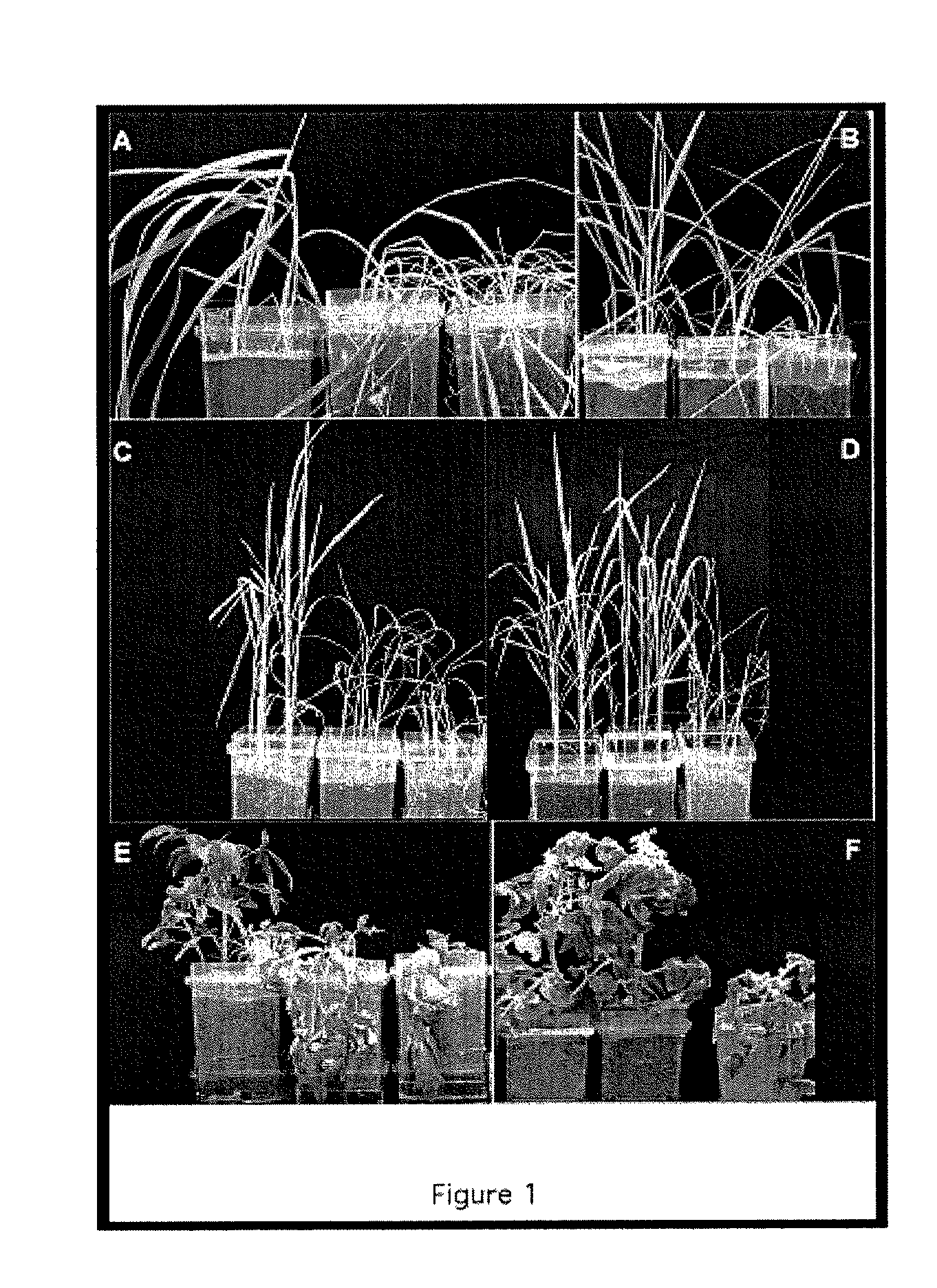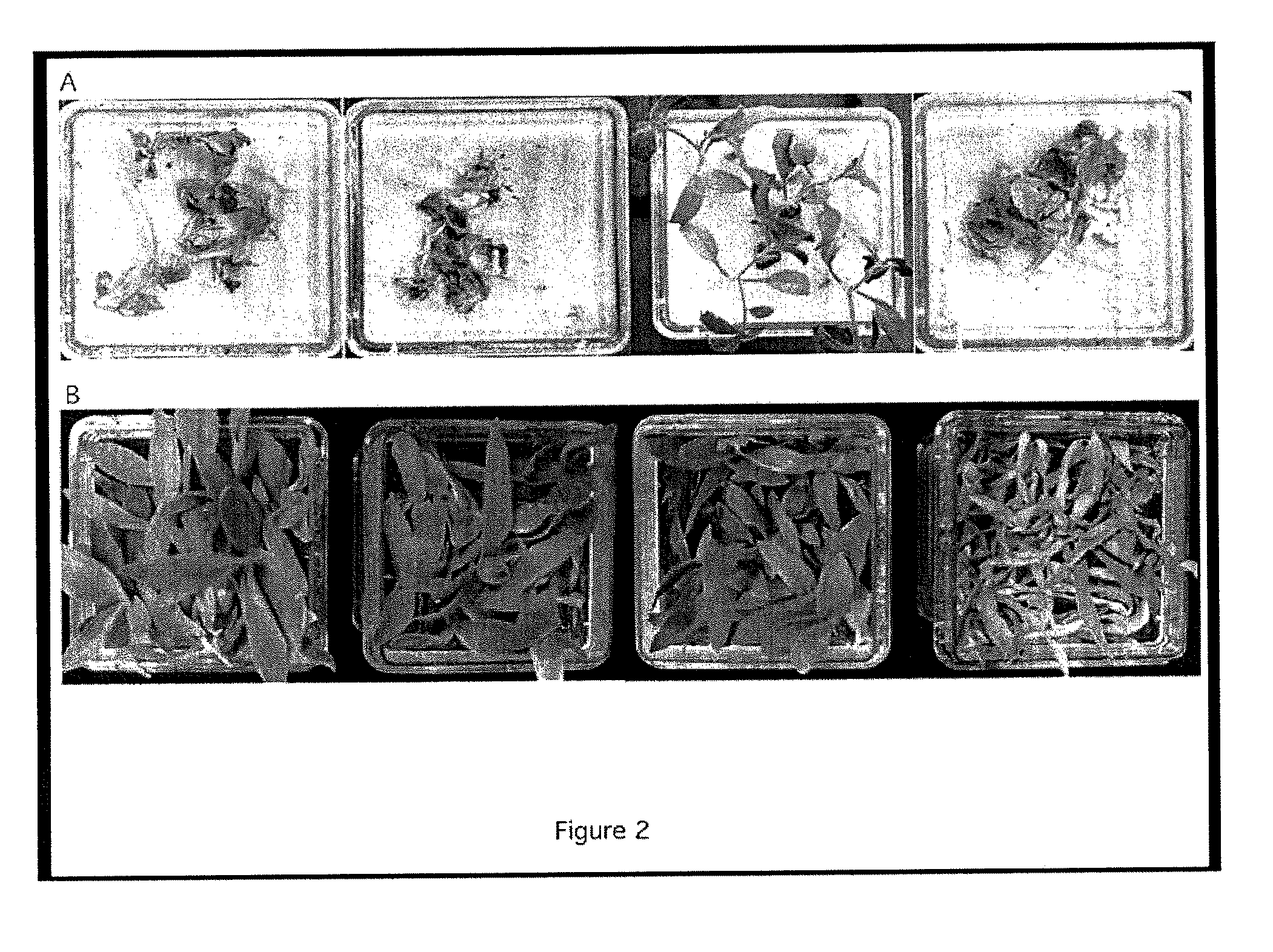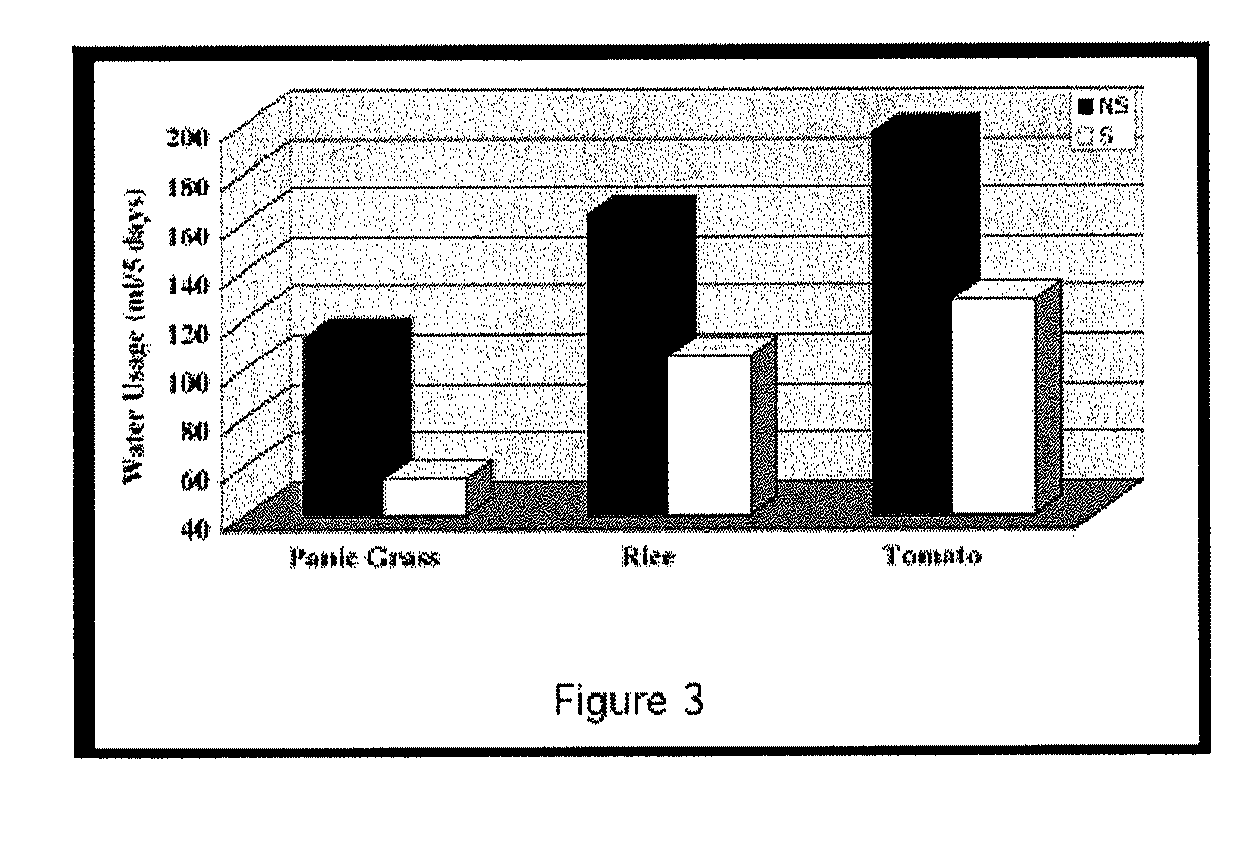Fungal isolates and their use to confer salinity and drought tolerance in plants
a technology of fungi and plant isolates, applied in the field of use, can solve the problems of limiting agricultural yield, limiting agricultural production, and the most acute constraints of salinity stress on agricultural production, and achieve the effect of reducing salt levels in soil
- Summary
- Abstract
- Description
- Claims
- Application Information
AI Technical Summary
Benefits of technology
Problems solved by technology
Method used
Image
Examples
example 1
Evaluation of Coastal Habitats—Role of Fusarium in Conferring Salt Tolerance
[0050]Plant communities on Puget Sound beaches of Washington State are commonly dominated by Leymus mollis (dunegrass). In this habitat, plants are exposed to sea water during high tides and summer seasons are typically very dry. These plants are annual species that achieve high population densities and remain green until they senesce in the fall. Two hundred dunegrass individuals were collected from four geographically distant locations (>16 km) in Puget Sound and found to be colonized with one dominant class 2 fungal endophyte that represented 95% of all fungi isolated. The endophyte was identified as Fusarium culmorum using morphological and molecular techniques and was isolated from plant roots, crowns and lower stems as previously described (Redman et al., 2002, Symbiosis 32: 55-70).
[0051]Based on the abiotic stresses imposed in the coastal habitats, we tested the ability of F. culmorum (isolate FcRed1)...
example 2
Evaluation of Geothermal Soil Habitats
[0056]The present inventors previously reported that a fungal endophyte (Curvularia sp.) was responsible for thermotolerance of the monocot Dichanthelium lanuginosum (panic grass) which thrives in geothermal soils of Yellowstone National Park (Redman et al., 2002, Science, supra). The endophyte was been identified as Curvularia protuberata using morphological and molecular techniques (methods). Studies similar to those discussed above were performed with an isolate of C. protuberata (CpMH206) obtained from ATCC that originated from a grass growing in a non-geothermal habitat in Scotland, United Kingdom. Comparative studies with a C. protuberata isolate (Cp4666D) from panic grass and CpMH206 revealed that both isolates equally colonized tomato and panic grass (Table 2). While Cp4666D conferred heat tolerance to both panic grass and tomato plants, CpMH206 did not (FIG. 2a). To ensure that CpMH206 was symbiotically communicating with the plants and...
example 3
Evaluation of Agricultural Habitats
[0057]Fungi from the genus Colletotrichum are designated as plant pathogens yet they can express mutualistic lifestyles depending on the hosts they colonize (Redman et al., 2001, New Phytol., supra). For example, C. magna isolate CmL2.5 is a virulent pathogen of cucurbits but asymptomatically colonizes tomato. Depending on the tomato genotype, CmL2.5 will increase growth rates and / or fruit yields, and confer drought tolerance and / or confer disease resistance against virulent pathogens (Redman et al., 2002, Science, supra; Redman et al., 2001, New Phytol., supra). Interestingly, the Colletotrichum species do not confer salt or heat tolerance to tomato or cucurbits and the Curvularia and Fusarium isolates described above do not confer disease resistance (not shown). Therefore, Colletotrichum species are adapted to agricultural habitat specific stresses (high disease pressure) and confer disease resistance to plant hosts. As seen with the Curvularia a...
PUM
 Login to View More
Login to View More Abstract
Description
Claims
Application Information
 Login to View More
Login to View More - R&D
- Intellectual Property
- Life Sciences
- Materials
- Tech Scout
- Unparalleled Data Quality
- Higher Quality Content
- 60% Fewer Hallucinations
Browse by: Latest US Patents, China's latest patents, Technical Efficacy Thesaurus, Application Domain, Technology Topic, Popular Technical Reports.
© 2025 PatSnap. All rights reserved.Legal|Privacy policy|Modern Slavery Act Transparency Statement|Sitemap|About US| Contact US: help@patsnap.com



